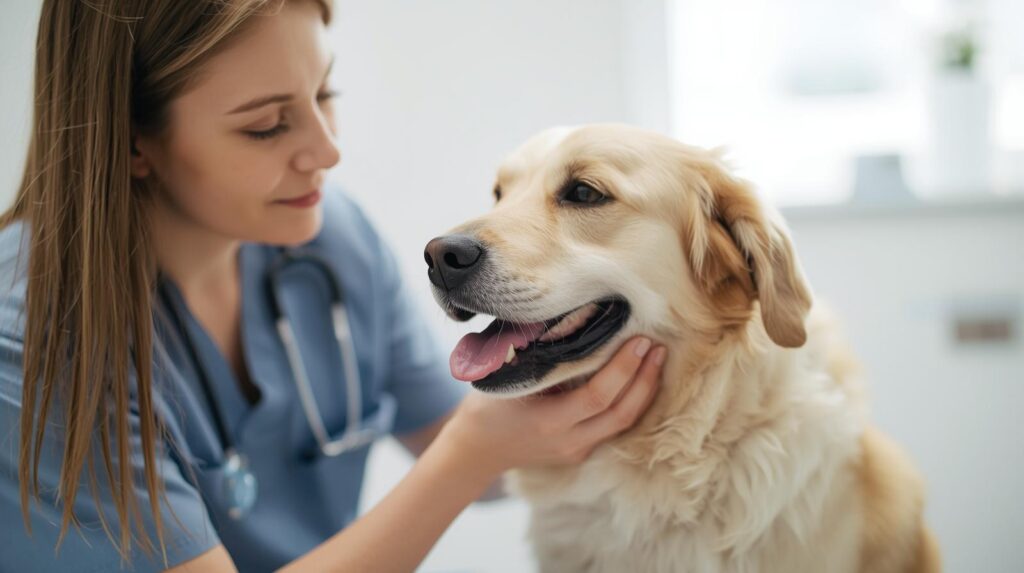Hey, have you noticed how everything’s gone online these days? Have you heard about pet telehealth services? Even taking care of our pets isn’t what it used to be. Remember when you had to drag your scaredy-cat to the vet’s office for every little thing? Now, with pet telehealth, you can chat with a vet right from your couch. It’s like having a quick doctor visit without the hassle. I think it’s a game-changer, especially for busy folks like us.
Pet telehealth basically means using video calls, apps, or texts to get advice from vets. It’s not new, but it’s exploding right now. Back in 2024, the whole market was worth about $300 million globally. Experts say it’ll hit almost $2 billion by 2034. That’s wild growth—over 20% a year. Why? More people treat pets like family, and who has time for long drives anymore?
I remember my first time using it. My dog, Max, started limping after a park run. Instead of panicking and rushing out, I hopped on an app. The vet saw the video I sent and said it was just a sprain. Saved me a stressful car ride. Stuff like that makes you feel smarter about pet care.

Why Pet Telehealth Is Taking Off
Life’s hectic. With jobs, kids, and everything else, squeezing in a vet appointment feels impossible sometimes. Pet telehealth fixes that. You get help fast, often 24/7, without leaving home. It’s perfect for quick questions, like “Why is my rabbit sneezing?” or follow-ups on meds.
Think about the benefits. First, it’s cheaper—no gas or waiting room fees. A basic consult might run $20 to $50, way less than an in-person visit. Plus, it’s less stressful for pets. My friend’s cat hates the car; she’d hide for hours after trips. Now, with telehealth, the cat stays chill, and everyone’s happier.
But it’s not just convenience. In rural spots or during bad weather, it’s a lifesaver. No more skipping check-ups because the clinic’s too far. And with pet ownership booming—nearly 70% of U.S. homes have a furry buddy—demand is through the roof.
One downside? It’s not for everything. Serious stuff like surgeries still needs hands-on exams. But for everyday care, it’s spot on. I wish it was around when I had my first puppy; would’ve caught his allergies sooner.
The Rise of AI in Pet Check-Ups
Okay, let’s talk tech. Artificial intelligence is sneaking into pet telehealth like it’s no big deal. Apps now use AI to scan photos of your pet’s skin rash or ear gunk and suggest what might be wrong. It’s like having a super-smart sidekick for the vet.
Take symptom checkers. You describe Fido’s tummy troubles, and boom—AI spits out possible causes. Then the real vet jumps in via video. Companies like AirVet are all over this. Their tools flag issues early, so you act before it’s an emergency.
I tried one with my hamster’s weird eye thing. The AI said it could be an infection, and sure enough, the vet prescribed drops over chat. Caught it quick, no drama. In my opinion, AI makes vets look like wizards, but it also empowers us owners to spot problems ourselves.
The cool part? It predicts stuff too. AI crunches data from past visits to warn about risks, like heart issues in older dogs. That’s preventive care at its best—keeping your pet healthy instead of just fixing what’s broken. Watch out, though: AI isn’t perfect. It can misread things, so always loop in a human vet.
Wearables: Your Pet’s Personal Tracker
Ever wished your dog could text you if it felt off? Close enough—pet wearables are here. These gadgets, like collars or tags, track heart rate, steps, and even sleep. They link straight to telehealth apps, so vets see real-time data.
Picture this: Your cat’s Fitbit-for-furballs buzzes your phone. “Hey, activity’s down 30%—might be arthritis.” You share that with the telehealth vet, and they adjust the plan on the spot. Brands like Whistle or Fi are leading the pack, and sales are up 70% lately.
I got one for Max last year. It alerted me to weird breathing patterns during a heatwave. Vet via app said hydrate more and cool off—problem solved. It’s like parenting with backup. The benefit? Early warnings mean fewer big vet bills. Tip: Start with affordable ones under $100; they pay for themselves fast.

But a heads-up: Not all pets love gadgets. My neighbor’s bird ignored its tracker. And privacy matters—those devices share data, so pick trusted brands. Still, for active pets, it’s a no-brainer trend.
From Fixes to Prevention: A Smarter Approach
Telehealth used to be for emergencies only—like “My fish is floating sideways!” Now, it’s shifting to keeping pets well from the start. Routine chats about diet, exercise, or behavior are huge. Vets help tweak food plans or spot anxiety early.
This preventive vibe is massive. Chronic issues like obesity hit 60% of dogs; telehealth nips that with virtual weigh-ins and tips. Services like Vetster offer monthly check-ins for $20. It’s like a pet gym membership, but for health.
Compare it to human care. We have annual physicals; why not pets? I love how it builds ongoing chats with your vet. No more starting from scratch each visit. Real-life win: A friend used it for her senior dog’s joint pain. Switched to better food via app advice—dog’s zooming around again.
Warning: Don’t skip physicals entirely. Telehealth shines for monitoring, but hands-on touch is key yearly. The value? Healthier, longer lives for our pals, and peace of mind for us.
Mental Health Matters: Telebehavioral Services
Pets aren’t just bodies—they’ve got feelings too. Enter telebehavioral health. Vets specialize in why your pup chews the couch or your parrot screams at night. All over video, no judgment.
This trend’s blowing up because stress shows in weird ways. Post-pandemic, pet anxiety spiked. Services like those from PawSquad let you demo tricks or calm techniques live. It’s therapy for tails.
I used it once for Max’s separation issues. The behaviorist watched him on cam and suggested puzzle toys. Worked like a charm—he’s chill when I’m out now. Opinion: It’s underrated. People baby physical health but ignore the mind. This evens it out.
Benefits are clear: Less destructive homes, happier bonds. Tip: Record short clips beforehand; helps the expert. FAQ: Can it replace in-person therapy? No, but it’s a great first step or booster.
Global Reach: Telehealth Goes Worldwide
Not just a U.S. thing—Asia-Pacific’s exploding at 24% growth yearly. In places like Japan, apps handle everything from farm animals to city cats. Urban life means tiny apartments, big need for remote care.
Europe’s strong too, with 52% using smart devices for wellness. UK’s startups build vet-specific platforms. Emerging spots like India use it for rural livestock—farmers text pics of sick cows, get fixes fast.
Why care? It shows telehealth adapts everywhere. For us, it means more options, cheaper global vets maybe. I follow a Thai app that does English consults—handy for travel tips. The takeaway: Your pet’s care isn’t limited by zip code anymore.
Busting Barriers: Rules and Real Talk
Okay, not all smooth. Some states demand an in-person exam first—that’s the VCPR rule. Half the U.S. allows full telehealth now, but it’s patchy. Push for changes; groups like ASPCA are fighting outdated laws.
Cost can sting too, if uninsured. But pet insurance covers it more—check yours. And tech glitches? Keep a backup plan, like a nearby clinic number.
On the flip side, vet shortages make telehealth essential. There aren’t enough docs for all pets. This spreads the love, keeps clinics for urgents. Pro tip: Test your app connection before needing it—don’t learn mid-crisis.
Top Platforms to Try Right Now
Diving in? AirVet’s my go-to—unlimited chats for $20 a month. Great for new owners. Vetster’s quick video slots, licensed pros only. WhiskerDocs does texts for fast advice.
For AI fans, Petriage scans symptoms free. Want wearables? Pair Fi collar with TeleVet. Compare: AirVet’s cozy, like chatting a buddy; Vetster’s more formal.
Pick based on your pet—dogs love video, fish? Photo uploads. Start small: One consult, see if it clicks. Many offer trials.
FAQs: Quick Answers for Common Worries
Is pet telehealth safe?
Totally, if from licensed vets. They follow rules like human docs.
What if my pet needs tests?
Vets guide you—some mail kits for blood or urine.
How old does my pet have to be?
Any age, but pups/kittens might need initial visits.
Does insurance cover it?
More and more—Trupanion and Lemonade do.
Can it handle exotic pets?
Yes, specialists for birds, reptiles via apps like FirstVet.
These cover the basics. Got more? Most platforms have chat support.
Wrapping It Up: Your Pet’s Future Is Virtual
Whew, pet telehealth’s not just a fad—it’s reshaping how we keep our buddies thriving. From AI smarts to global access, these trends make care easier, smarter, and kinder. Imagine fewer sick days, more playtime.
My advice? Dip a toe in today. Download an app, try a free chat. You’ll wonder how you managed without it. Your pet thanks you—happy, healthy tails all around. What’s stopping you?
